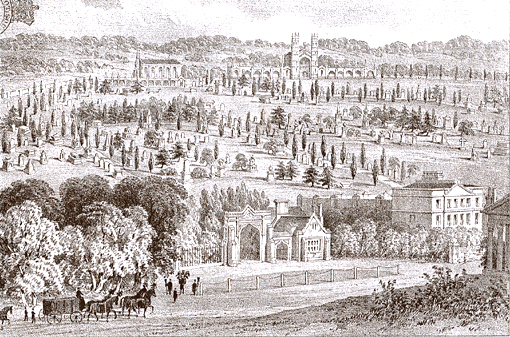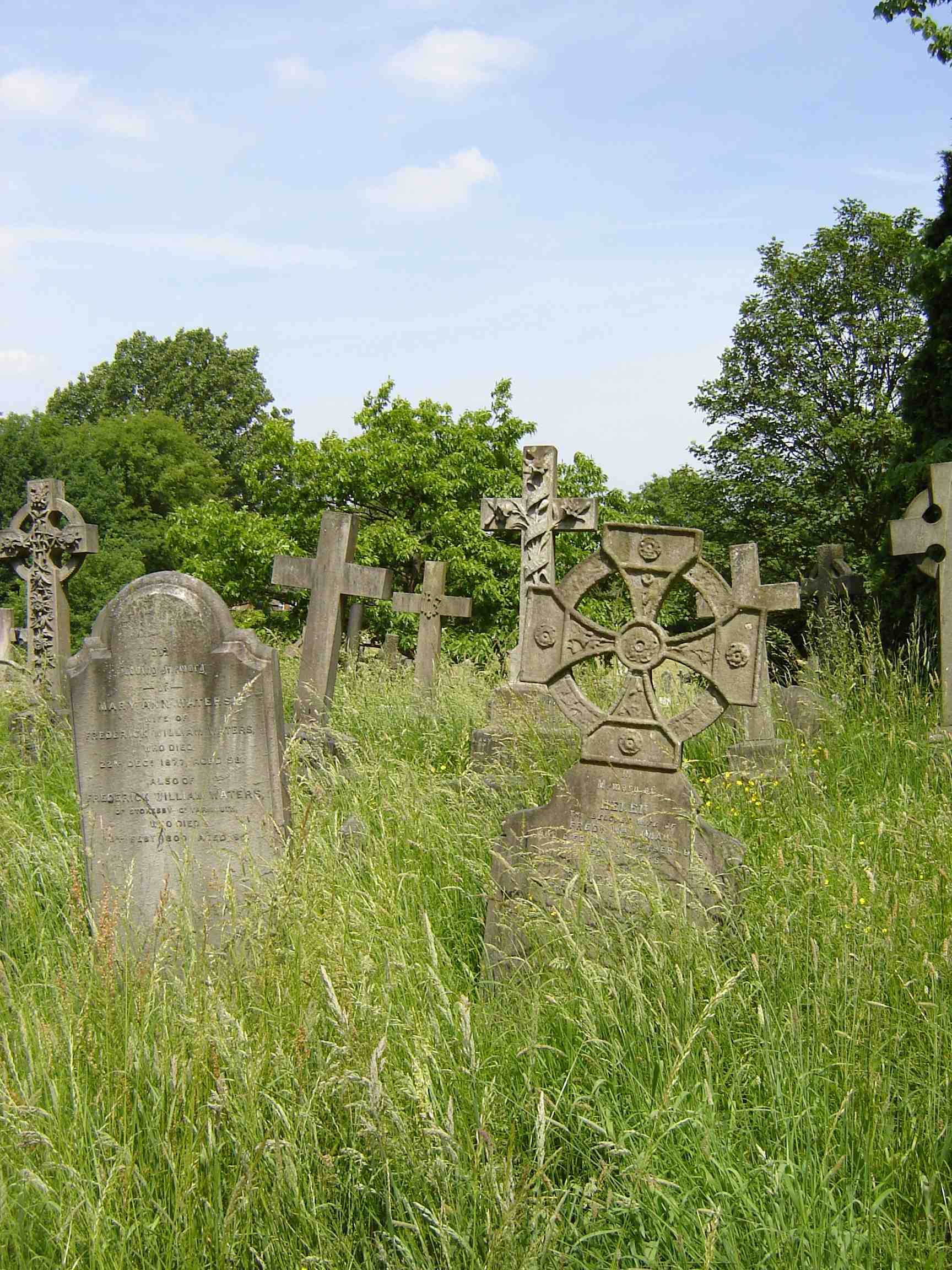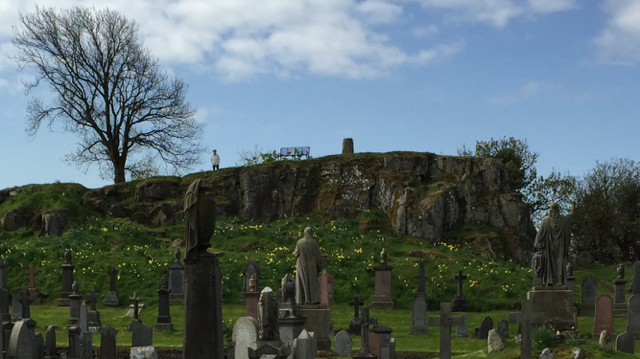This week I want to use an example from Anthropology think about space, method and discovery in learning. For that, I’m going back to draw on a subject about which I actually know more about than most people: cemeteries. It’s #rhizo15 thinking using the spatial and conceptual metaphor of Victorian cemeteries in Britain.
So, the prompt this week was getting me to think about the role of a teacher/facilitator or similar (appropriately this seems to coincide with “Thank a Teacher” week, which I hadn’t come across before) in different learning contexts and in particular in rhizomatic learning.
 Some of the most well-known Victorian cemeteries are located in large cities such as London or Glasgow. Highgate Cemetery in North London is a particular favourite with visitors as it’s the burial place of many well known people including Karl Marx. But regardless of ‘dark tourism’ – which is becoming an increasingly popular activity – the principles on which cemeteries were built in the 19th century shared elements with learning landscapes.
Some of the most well-known Victorian cemeteries are located in large cities such as London or Glasgow. Highgate Cemetery in North London is a particular favourite with visitors as it’s the burial place of many well known people including Karl Marx. But regardless of ‘dark tourism’ – which is becoming an increasingly popular activity – the principles on which cemeteries were built in the 19th century shared elements with learning landscapes.
They had indeed an educational mission of their own, constructed with practical as well as educational functions. While their primary function was to provide a place of disposal for the dead, cemeteries were also educational resources, usually constructed according to elaborate landscaping themes influenced heavily by theories around the picturesque and enlightenment.
For example, paths in a cemetery were often arranged in a pattern that drew visitors into the innermost part of the cemetery, leading them along a gently spiraling path usually to the highest, most central point of the site. Once you arrived at this elevated vantage point the view was intended to be significant, usually affording you a perspective that included a church or similar landmark. In London this was often Christopher Wren’s St Paul’s Cathedral.
At any rate, the cemetery’s layout, expressed through paths, rows of graves and planting schemes, was designed to give visitors a sense of exploration and discovery, while at the same time guiding them, drawing them into, a narrative of moral and social dimension.
Walking along the main path you would see first and foremost the most spectacular monuments, usually with inscriptions that highlighted values such as a strong faith, worldly success, family, social status etc. You would also see the natural elements of the space closely kept in check by man. And at strategic points there would be a bend in the path creating a sense of surprise at the view suddenly encountered, intended to prompt visitors to wonder, to think of higher things than their daily existence.
Not unlike a learning experience we might design online or in a blended environment today, the act of visiting a cemetery for your usual Sunday afternoon walk, was an orchestrated experience in Victorian Britain. It didn’t involve a guide as such, but all the elements, the landscape, the paths, the monuments, the inscriptions and the view came together to produce a particular experience/learning process. Cemeteries weren’t just libraries carved in stone, repositories of memory. They were and are learning spaces that were designed to be experienced on foot, to give the visitor a clear sense of where they may fit in the social and moral order of things, to aspire to the example of their betters and to be proud of/curious about those who left the largest, most impressive marks of the existence behind.
I am pretty sure you could draw some interesting conclusions in regards to the pastiche of architectural styles used in Victorian monumental masonry, from ancient to futuristic, but we’ll skip that for now. In short, the traditional visit to the cemetery is a very rigid learning experience that doesn’t need a ‘teacher’ because the space itself fulfills that role.
On the other hand, many of the Victorian cemeteries that stood splendid a century ago are now in ruins. Their spaces turning from public exhibitions of the mastery of religion, art and gardening over nature and ultimately over death to romantic landscapes of decay and testaments of change. We have grown ignorant of the visual and spatial languages they used to communicate their message, the values of the society that created them. More of than not, they become visual curiosities or tourist attractions or most often inconvenient pockets of space that stand in regulatory opposition to progress and development through their sheer existence (you will always find it difficult to develop land that still has grave markers on it after all – even in a city like London where every square inch is at a premium).
Today the most common way to experience a popular Victorian cemetery is on a tour conducted by volunteers. Volunteers who are usually very knowledgeable about the history, the individual ‘inhabitants’ and the original architecture/planting scheme/sculptures. They try their best to translate the significance of the space for us, to re-create not the moral lessons, but the historic content of the cemetery. They act as a teacher, a guide to the past.
 In contrast to the volunteer led tours, one of the experiences I found most valuable was to explore one of the most famous Victorian cemeteries in London at the side of one of its employees, a grave digger and guide par excellence. You might think that sounds a little gruesome. Most people don’t like to think about what grave diggers do. But someone who works with the land, who knows every inch of it, who can show you the hidden paths, the secret spaces the guided tours don’t come across, is the perfect guide. In my case I learnt that when you leave the intended path, when you stop following the traditional patterns of experience, you can discover a whole new perspective. Following his shortcuts we discovered new elements of the space, wild flowers, rare butterflies, protected birds, that had started creating a new order of things in the cemetery. A new experience that communicated very different values to those originally intended. Instead of religious faith, nature had taken over. In place of a path of enlightenment the cemetery has provided a refuge from the industrial, urban reality of 21st century London. This new purpose of the space I wouldn’t have discovered without my guide. He taught me what to look for, where to step – how not to fall into a hole left by a collapsed burial chamber.
In contrast to the volunteer led tours, one of the experiences I found most valuable was to explore one of the most famous Victorian cemeteries in London at the side of one of its employees, a grave digger and guide par excellence. You might think that sounds a little gruesome. Most people don’t like to think about what grave diggers do. But someone who works with the land, who knows every inch of it, who can show you the hidden paths, the secret spaces the guided tours don’t come across, is the perfect guide. In my case I learnt that when you leave the intended path, when you stop following the traditional patterns of experience, you can discover a whole new perspective. Following his shortcuts we discovered new elements of the space, wild flowers, rare butterflies, protected birds, that had started creating a new order of things in the cemetery. A new experience that communicated very different values to those originally intended. Instead of religious faith, nature had taken over. In place of a path of enlightenment the cemetery has provided a refuge from the industrial, urban reality of 21st century London. This new purpose of the space I wouldn’t have discovered without my guide. He taught me what to look for, where to step – how not to fall into a hole left by a collapsed burial chamber.
To get back to #rhizo15 and this week’s prompt, I’m interested in how we can create different ways of learning and teaching, some which can be more independent and some which are guided. The internet is an exciting space of ever evolving possibilities when it comes to learning and allows us to experiment with complicated simultaneous learning journeys all happening alongside each other in the same space. Thinking back to my post from last week, when I was thinking about curiosity and content, I think that discovery, whether it’s independent or guided, is still one of the things I am most interested in. In that spirit, I’m finishing this week with a picture of something I discovered in a cemetery this week in Stirling in Scotland.

[…] morning to return to #rhizo15 just as it is coming to an end. I read blog posts from Maha Bali and Maren Deepwell, both people who I know reasonably well. Their thoughts got me reflecting on the phenomenon of […]